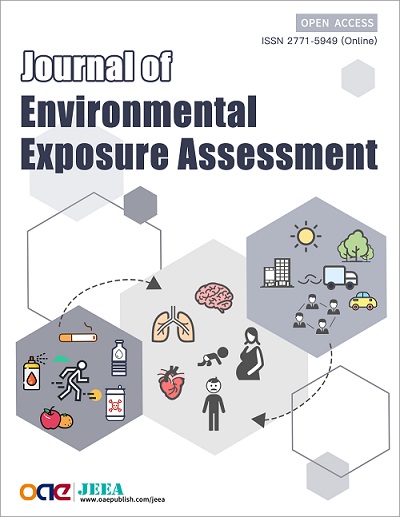Current research needs in environmental exposure assessment: a personal perspective
The Journal of Environmental Exposure Assessment (JEEA) was launched just over 1 year ago in response to the need for a journal dedicated to the exposure assessment component of environmental risk assessment. Since its 1st issue, JEEA has published a series of papers that have addressed a wide range of issues related to human and wildlife exposure to an equally wide range of chemical contaminants. However, there, of course, remains much to be done if important issues in exposure science are to be resolved. While such issues are too numerous and detailed to be described fully in this editorial, I provide here my personal perspective on what I consider to be some of the most important research gaps in this field.
1. Our understanding of the extent of human dermal exposure to organic contaminants present in consumer articles, such as perfluoroalkyl substances (PFAS) in clothing, furniture fabrics, and cosmetics, remains poor. Studies to fill this knowledge gap are a priority, given the rapidly increasing recognition of the potential adverse health effects of some PFAS.
2. While many studies have demonstrated the presence of microplastics in the environment, the understanding of how and to what extent human exposure occurs is sketchy. We currently know little about what polymers constitute the microplastics we encounter and the consequent implications for health. Moreover, the extent to which microplastics act as a source or a sink for chemical contaminants and thus increase or reduce exposure to such contaminants remains unclear.
3. More generally, but of fundamental importance, studies are needed to improve our understanding of the relationship between what we are exposed to via external media (external exposure) and what are present in the human body and associated excretions/secretions (internal exposure). These studies will need to address many aspects, such as the efficiency of contaminant uptake from external media (bioaccessibility and bioavailability), improving the accuracy of estimates of intake rates for inadvertent ingestion of chemical reservoirs like indoor dust and soil, and enhancing knowledge of the pathways and kinetics of contaminant metabolism. Moreover, there is a need for studies that compare estimates of internal exposure derived from measurements of urinary metabolites, and/or parent compounds in body tissues, with comprehensive external exposure estimates covering as many pathways as possible. To be most meaningful, these should be conducted in the same individuals at the same time-i.e., be spatially and temporally consistent.
For too long, exposure assessment has not received the attention it merits. As the JEEA Editorial Board and I stated in our 1st issue, “evaluating the risk of chemical contaminants requires knowledge of BOTH exposure and hazard.” In the first year of JEEA, I believe we have successfully fulfilled this requirement. I look forward to publishing more high-quality exposure science articles in the coming months and years.
DECLARATIONS
Authors’ contributionsThe author contributed solely to the article.
Availability of data and materialsNot applicable.
Financial support and sponsorshipNone.
Conflicts of interestThe author declares that there are no conflicts of interest.
Ethical approval and consent to participateNot applicable.
Consent for publicationNot applicable.
Copyright© The Author 2023.
Cite This Article
How to Cite
Harrad, S. Current research needs in environmental exposure assessment: a personal perspective. J. Environ. Expo. Assess. 2023, 2, 12. http://dx.doi.org/10.20517/jeea.2023.21
Download Citation
Export Citation File:
Type of Import
Tips on Downloading Citation
Citation Manager File Format
Type of Import
Direct Import: When the Direct Import option is selected (the default state), a dialogue box will give you the option to Save or Open the downloaded citation data. Choosing Open will either launch your citation manager or give you a choice of applications with which to use the metadata. The Save option saves the file locally for later use.
Indirect Import: When the Indirect Import option is selected, the metadata is displayed and may be copied and pasted as needed.
About This Article
Copyright
Data & Comments
Data















Comments
Comments must be written in English. Spam, offensive content, impersonation, and private information will not be permitted. If any comment is reported and identified as inappropriate content by OAE staff, the comment will be removed without notice. If you have any queries or need any help, please contact us at support@oaepublish.com.